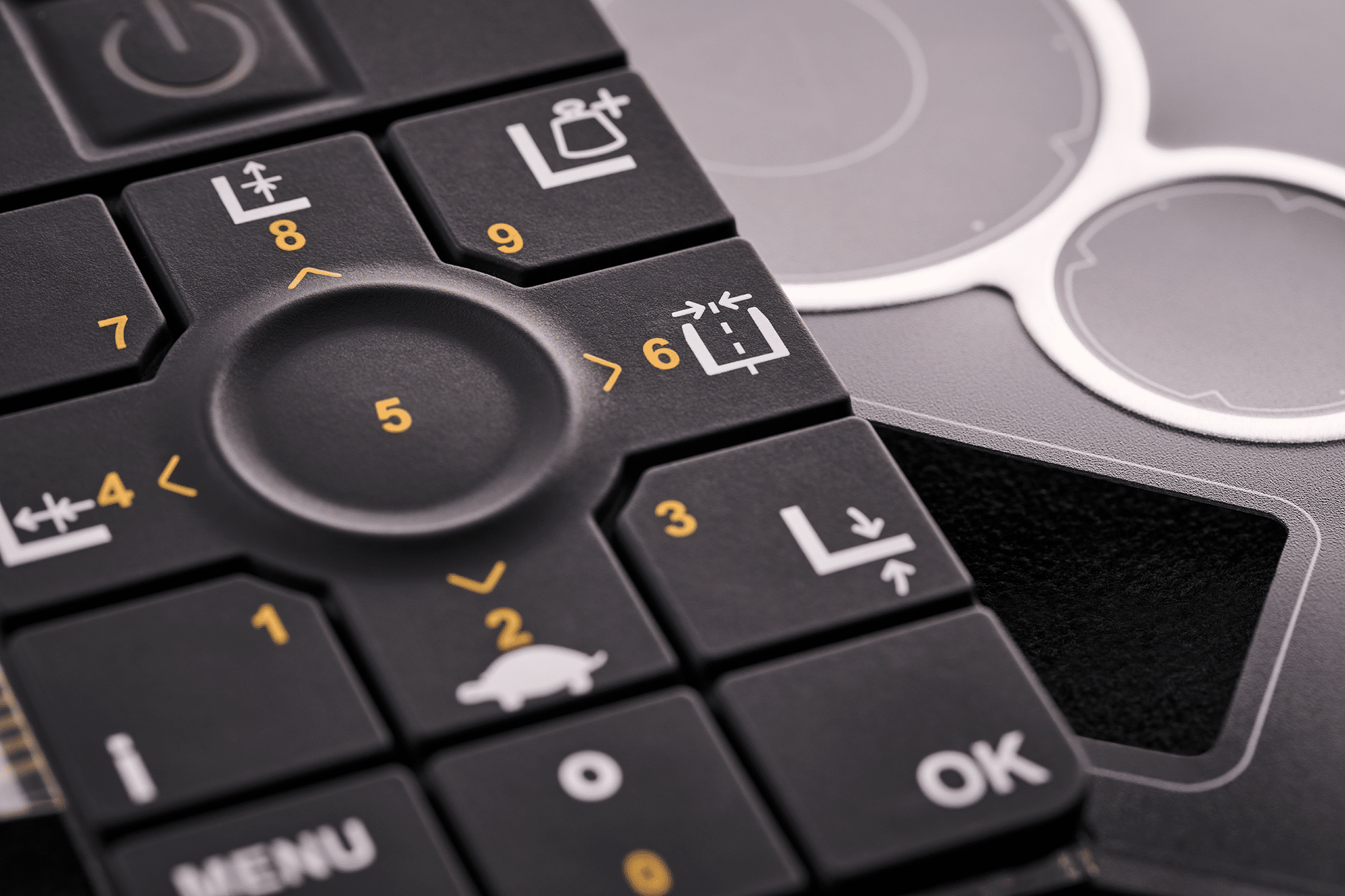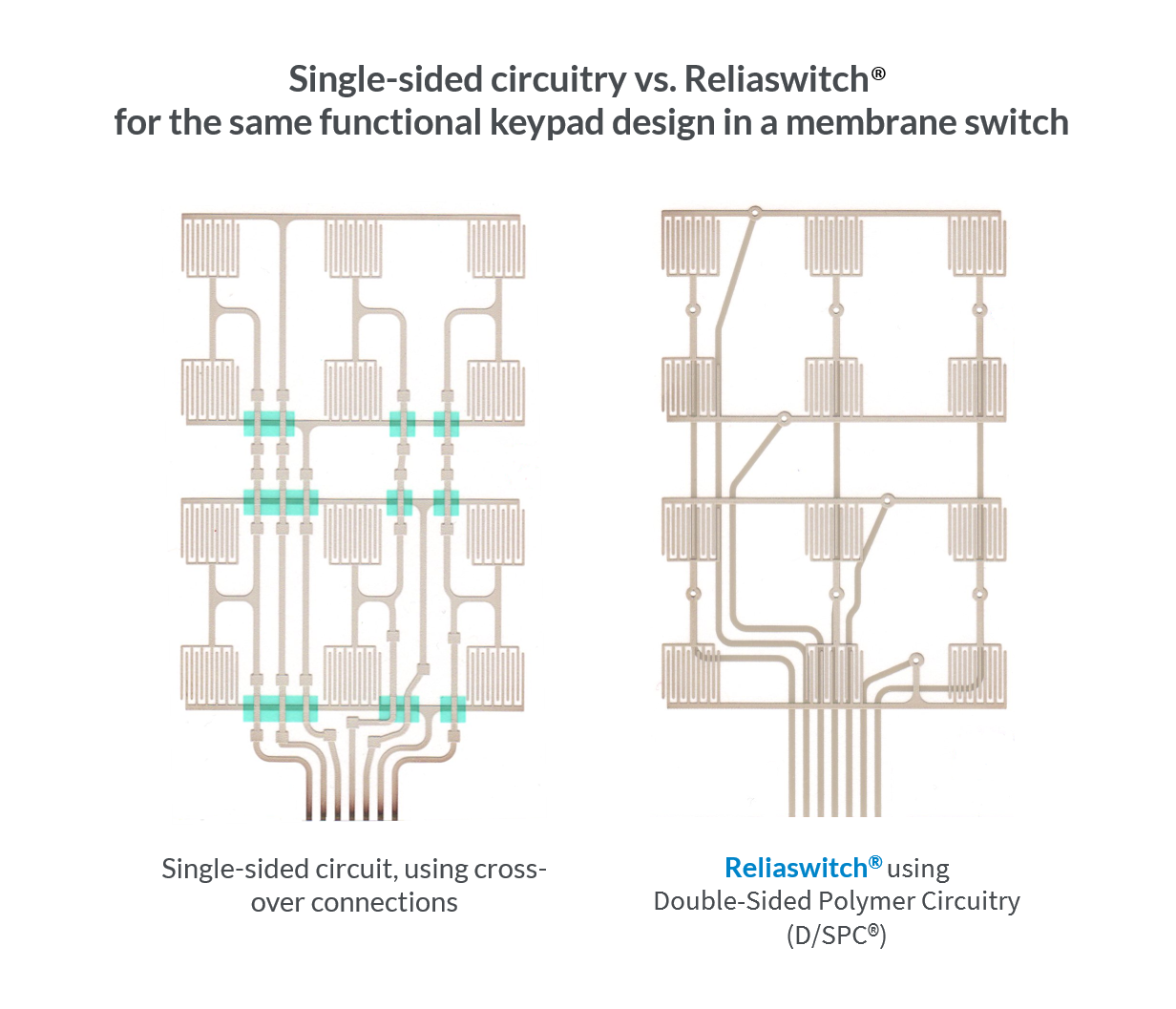All About Membrane Switch: A Comprehensive Overview for Beginners
Membrane layer switches are vital elements in contemporary electronic devices, providing an unique user interface for user communication - membrane switch. Their layered construction, including overlays and conductive traces, provides capability and longevity. Unlike traditional mechanical buttons, membrane layer buttons offer a smooth style and customizable choices. Understanding their crucial attributes and advantages can transform product design. Nonetheless, the intricacies of their application and style considerations require further exploration
What Is a Membrane layer Switch?
A membrane button is a kind of electrical switch that is composed of a flexible membrane layer layered over a published circuit board. This style permits a sleek and small user interface, often used in numerous digital devices. Membrane switches are generally found in consumer appliances, medical tools, and industrial equipment because of their durability and resistance to environmental factors.The building normally consists of several layers, such as graphic overlays and glue support, which supply responsive feedback and protect the circuitry beneath. The procedure of a membrane layer switch is started when stress is related to the surface area, finishing an electrical circuit.These switches are valued for their versatility, enabling custom-made designs and printed graphics that accommodate details interface. Their low-profile nature minimizes space needs, making them suitable for applications where typical buttons may not fit. Generally, membrane layer buttons offer a useful and visual solution for modern-day digital devices.
Secret Elements of Membrane Layer Changes
Membrane layer switches over comprise numerous key elements that add to their functionality and efficiency. The leading layer, known as the overlay, provides the user interface and is frequently printed with signs or graphics. Beneath the overlay lies a spacer layer, which divides the conductive aspects and protects against inadvertent activation. The next vital component is the graphic layer, which boosts looks and guarantees the durability of the design.Conductive traces, commonly made from materials like silver or carbon, are published on the circuit layer. When stress is put on the overlay, these traces come right into call, completing the circuit. Additionally, a support layer offers architectural support and can be made from materials such as polyester or polycarbonate. With each other, these parts create a reputable, user-friendly interface ideal for different applications, from family appliances to commercial devices. Understanding these elements is vital for anybody thinking about membrane switch technology.
Just How Membrane Switches Over Job
Comprehending exactly how membrane layer switches over function is important for appreciating their extensive use in different devices. A membrane layer button runs via a series of layers, including a visuals overlay, spacer, and a circuit layer. When pressure is put on the overlay, it presses the spacer layer, allowing the circuit layer to make call and finish an electric circuit. This activity sends a signal to the tool, triggering a reaction, such as activating a light or turning on a function.Membrane changes can be designed with various attributes, consisting of tactile responses, backlighting, and personalized graphics, boosting user interaction. Their building and construction allows for a sealed design, protecting the inner components from dirt, moisture, and impurities. This sturdiness makes them suitable for diverse applications, from consumer electronics to commercial tools. In general, the simpleness and effectiveness of membrane layer changes add to their popularity in contemporary innovation.
Benefits of Membrane Switches Mechanical Buttons
While mechanical buttons have long been a staple in numerous gadgets, membrane changes offer distinct advantages that make them progressively appealing. One significant benefit is their slim profile, permitting for more portable designs and greater versatility in product development. In addition, membrane changes attribute a consistent surface, which boosts aesthetic appeal and simplifies cleansing, making them ideal for environments where health is critical.Another benefit is their resistance to dust and dampness. Unlike mechanical switches, which can be compromised by environmental factors, membrane buttons supply a sealed interface that safeguards versus pollutants - membrane switch. Membrane buttons usually have a longer life expectancy due to less moving components, resulting in enhanced resilience and reliability.Cost-effectiveness is likewise a noteworthy advantage, as membrane buttons can be produced in bulk with reduced manufacturing costs. These aspects incorporate to position membrane switches as a practical option to conventional mechanical alternatives in numerous applications
Typical Applications of Membrane Changes
Membrane switches are extensively utilized in various sectors, specifically in consumer electronics and commercial control panels. In customer gadgets, they supply a sleek, easy to use user interface, while in commercial setups, they enhance toughness and capability. Comprehending these applications highlights the adaptability and usefulness of membrane switches in contemporary innovation.
Customer Electronic Devices Instruments
As customer electronics remain to advance, membrane buttons have actually ended up being a preferred selection for a selection of tools because of their flexibility and streamlined layout. These buttons are frequently located in mobile phones, tablets, and remote controls, where area is limited and aesthetic appeals issue. Their low account and personalized layouts permit makers to develop user-friendly user interfaces that boost the overall customer experience. In addition, membrane layer switches are usually made use of in appliances such as microwaves and coffee machine, providing user-friendly control choices while withstanding moisture and dirt. The longevity and reliability of membrane layer switches over make them ideal for daily customer items, guaranteeing longevity and consistent efficiency. In general, their assimilation in consumer electronic devices shows a blend of capability and contemporary layout.
Industrial Control Panels
The applications of membrane changes prolong beyond consumer electronics, finding substantial use in commercial control board. These switches are preferred for their durability and resistance to extreme settings, making them optimal for making and procedure control setups. They offer a reliable interface for operators to manage machinery, monitor processes, and adjust settings. Membrane layer buttons can be customized to match certain operational requirements, incorporating functions like backlighting and tactile responses, enhancing user experience. Their inconspicuous design allows for combination into different equipment, while their capability to withstand spills, dirt, and severe temperatures assurances durability. In general, membrane switches add to effective and safe procedure in industrial applications, demonstrating their flexibility and efficiency in demanding atmospheres.
Factors To Consider for Creating Membrane Layer Switches Over
When making membrane layer buttons, choosing the right products is necessary to ensure toughness and functionality. Additionally, comprehending layer Bonuses configuration techniques can considerably affect the button's performance and customer experience. These factors to consider play an important function in developing reliable and trustworthy membrane switch styles.
Product Option Value
Product selection plays an essential duty in the design and performance of membrane buttons. The picked products straight affect the switch's longevity, tactile response, and overall visual. Key factors to consider include the substrate, which must give structural integrity while allowing for versatility, and the visuals overlay, which requires to be resistant to wear and ecological elements. Conductive materials should ensure dependable electric performance, while adhesives need to use strong bonding without compromising the switch's operation. In addition, compatibility with producing procedures and end-user environments is vital; materials must stand up to varying temperature levels, moisture levels, and chemical exposure. Ultimately, suitable material choice not just enhances the membrane layer button's efficiency but additionally adds to its long life and user fulfillment, making it a vital aspect of the design process.

Layer Setup Techniques

Regularly Asked Questions
For How Long Do Membrane Switches Over Usually Last?
Membrane layer switches usually have a lifespan of 1 to 5 million cycles, relying on usage and environmental problems. Factors such as layout high quality and operating regularity significantly affect their resilience and total performance durability.

Can Membrane Changes Be Customized for Specific Layouts?
Membrane layer switches can undoubtedly be customized to suit certain layouts, enabling for diverse forms, colors, and functionalities. This adaptability makes it possible for makers to customize these buttons to satisfy distinct visual and operational demands effectively.
What Materials Are Used in Membrane Change Building And Construction?
Membrane layer switches are typically built making use of products such as polyester, polycarbonate, and adhesive layers. These materials offer resistance, sturdiness, and adaptability to environmental variables, making sure the switches work effectively in numerous applications and problems.
Are Membrane Layer Changes Water Resistant or Immune to Dampness?
Membrane layer switches can be developed to be moisture-resistant, using specialized materials and finishes. Their water-proof capacities depend on building and construction high quality and details applications, making it crucial to assess demands for perfect performance in different settings.
How Are Membrane Layer Switches Over Repaired if Harmed?
Fixing damaged membrane layer switches over typically involves changing the influenced layer or circuit. Specialists may also use conductive glue or make use of specialized repair work sets, making sure performance is brought back without complete substitute of the entire button assembly. Unlike typical mechanical buttons, membrane layer switches present a streamlined layout and adjustable options. A membrane layer switch is a type of electric switch that consists of an adaptable membrane layered over a printed circuit board. The operation of a membrane button is initiated when stress is used to the surface, finishing an electric circuit.These buttons are valued for their flexibility, enabling personalized designs and published graphics that provide to certain customer interfaces. While mechanical buttons have actually long been a staple in numerous gadgets, membrane layer switches over offer distinctive benefits that make them increasingly appealing. Membrane layer switches typically have a longer lifespan due to less moving components, resulting in enhanced longevity and reliability.Cost-effectiveness is also a noteworthy advantage, as membrane switches can be generated in bulk with reduced manufacturing prices.